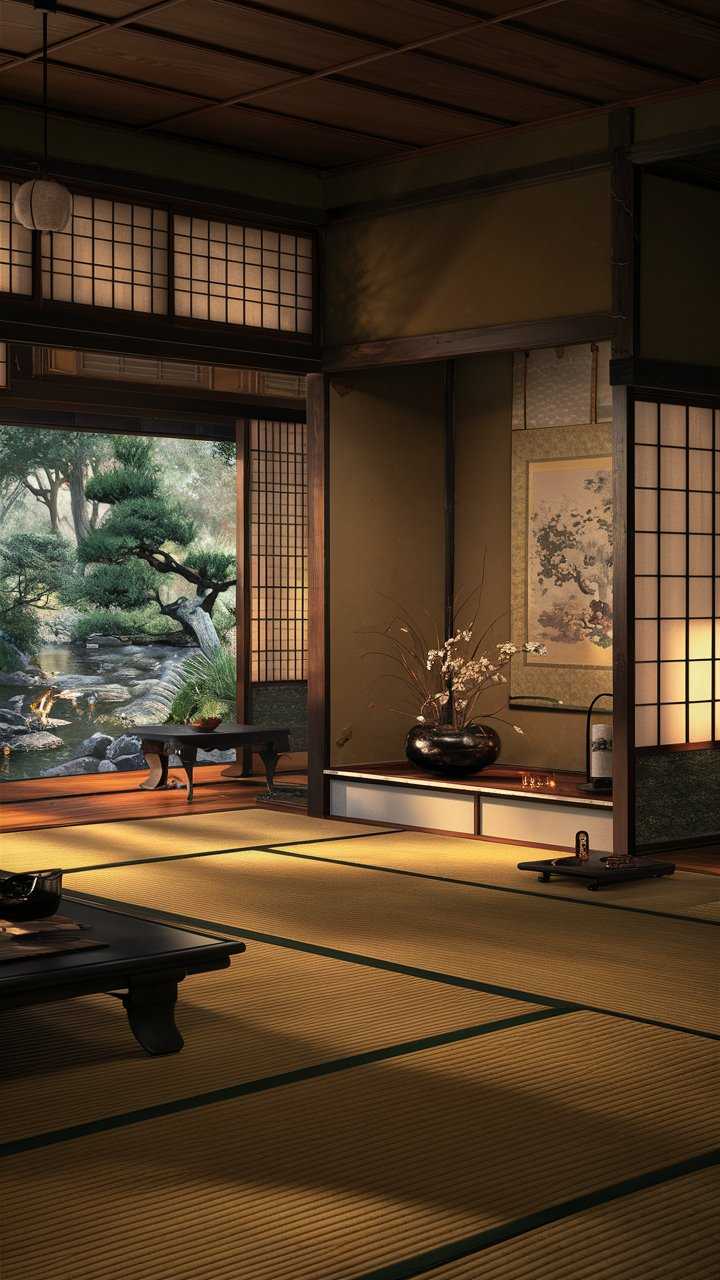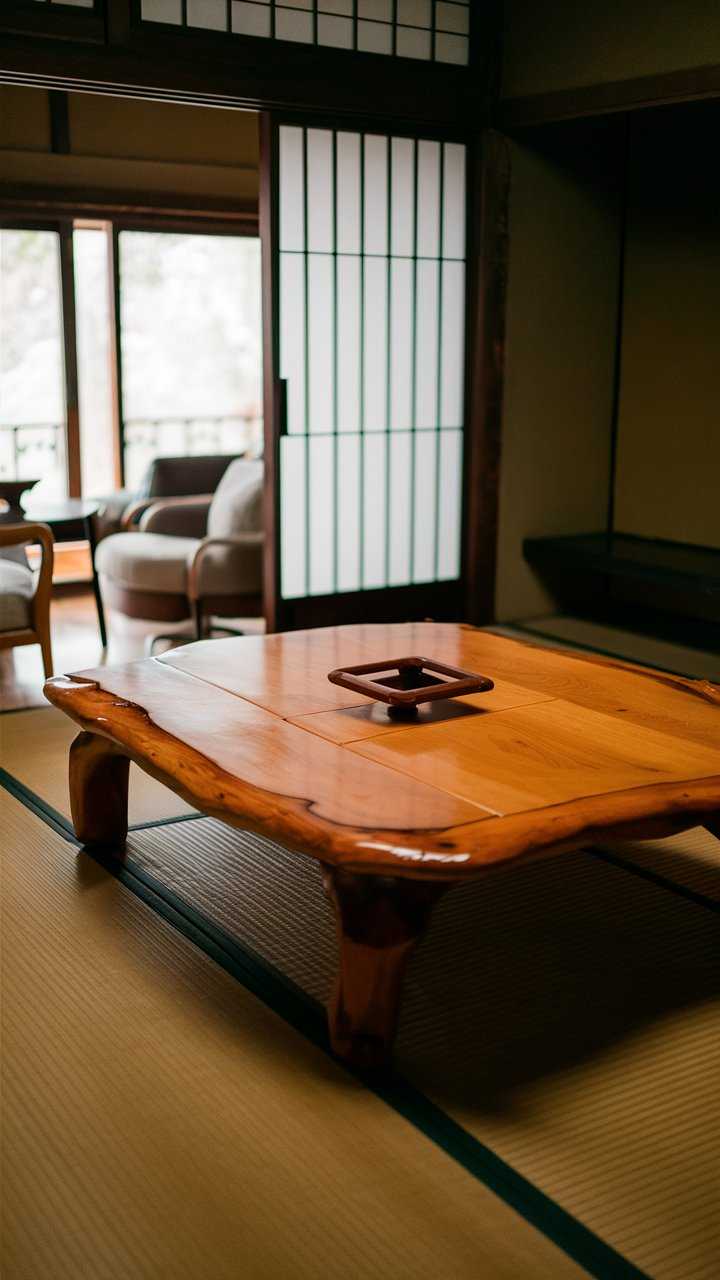Serene Japanese Living Room Design Ideas for Your Home
Japanese living room design combines tranquility, harmony, and natural elements beautifully. It focuses on creating a peaceful space away from daily life’s noise. By choosing minimalist decor, your room feels open and calm. Each piece should have a purpose, adding to the calm feeling.
Explore these design ideas to make your living space reflect your values and lifestyle. This creates an inviting and restful environment.
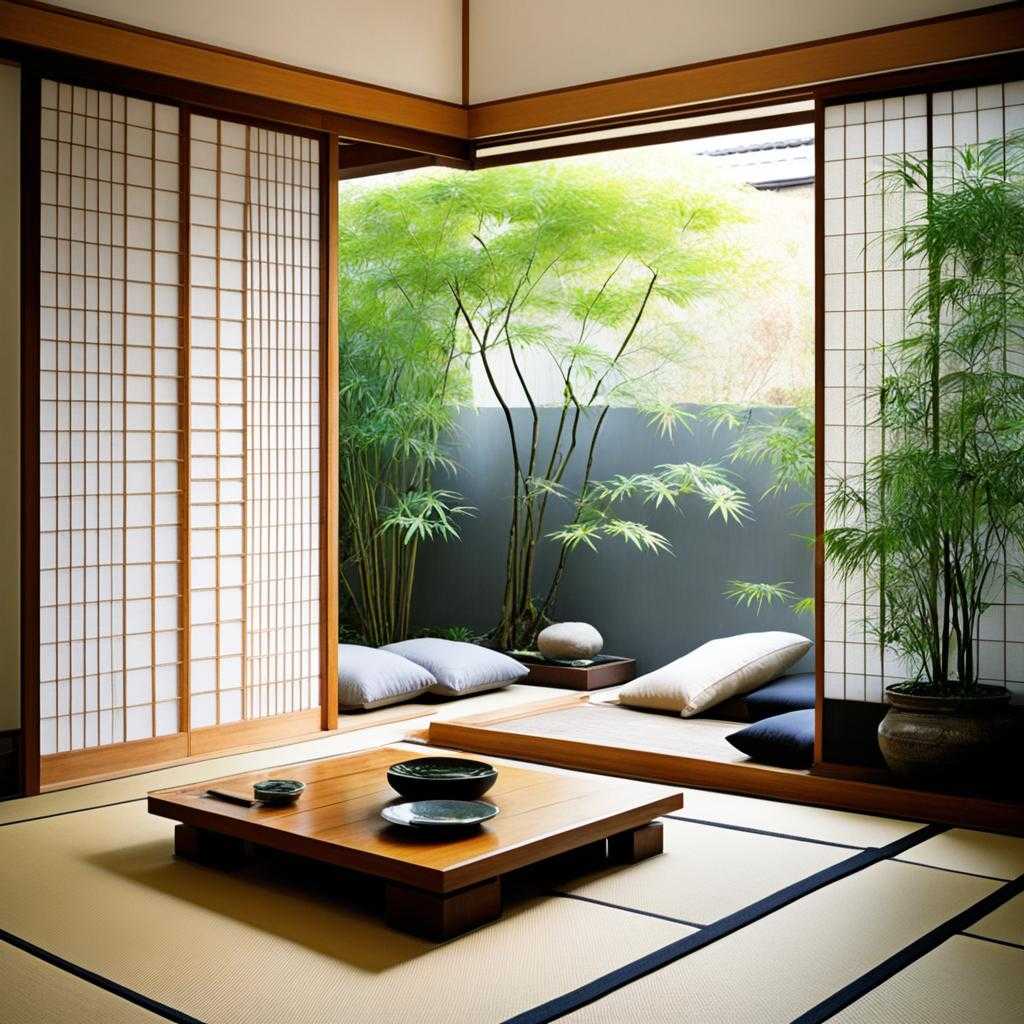
Key Takeaways
- Japanese living room design promotes tranquility and harmony.
- Minimalist decor creates a serene environment.
- Functionality and aesthetics work hand-in-hand for a zen interior.
- Every item in the space should have a purpose.
- A thoughtfully designed space reflects personal values and lifestyle.
Embrace Minimalism for a Calming Atmosphere
Starting with minimalism can make your living space more serene. It fits well with Japanese design. By using minimalist decor, you reduce distractions and focus on what’s important. This journey to a peaceful space begins with looking at your space closely.
Declutter Your Space
Start by looking at every item in your home. Think about its importance and if it makes you happy. Getting rid of things that don’t matter or bring joy can make your space look better. It also helps clear your mind, making you feel more calm.
Focus on Essential Items
Choosing essential items means picking furniture and decor that are simple yet functional. Look for pieces that add to a clean look and meet your needs. By focusing on these items, you follow the Japanese design idea of valuing quality over quantity.
Incorporate Natural Materials
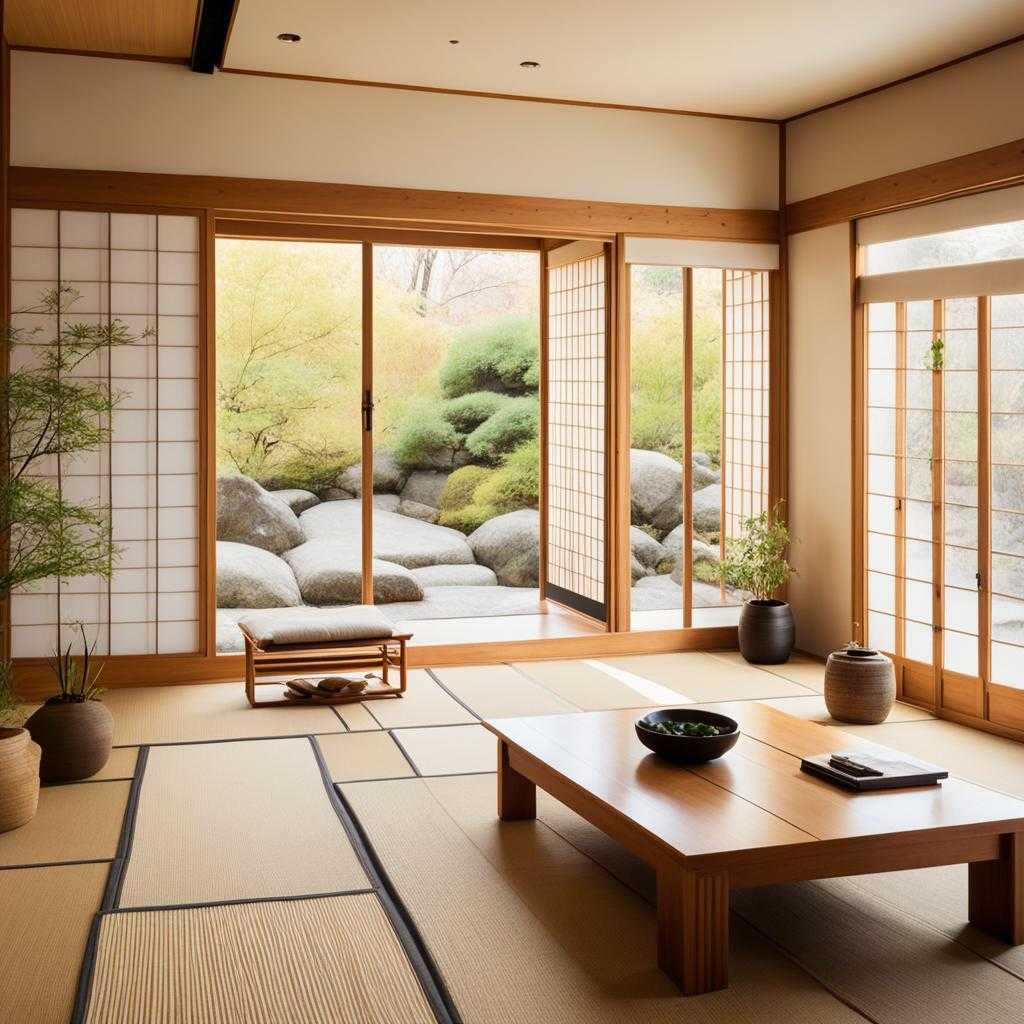
Natural materials are key in making Japanese living rooms peaceful. They connect us to nature and create a calm feel. Wooden furniture adds warmth and brings the outdoors in.
Wooden Furniture Elements
Wooden furniture, like pieces from oak, cedar, or pine, shows off nature’s beauty. Using natural materials adds beauty and lasts a long time. Items like low-profile coffee tables and simple shelving follow Japanese design. They keep things simple but still work well.
Bamboo and Stone Accents
Bamboo adds beauty and soft light to the room. Using bamboo for blinds or decor creates a calm, gentle glow. Stone accents bring a natural, rough beauty. Together, bamboo and stone make the space feel balanced and rich.
For more ideas on using nature in your home, check out designs with floral watercolor wallpaper. This connects you to nature in a peaceful way. Learn more at floral watercolor wallpaper designs.
Introduce Tatami Mats for Authenticity
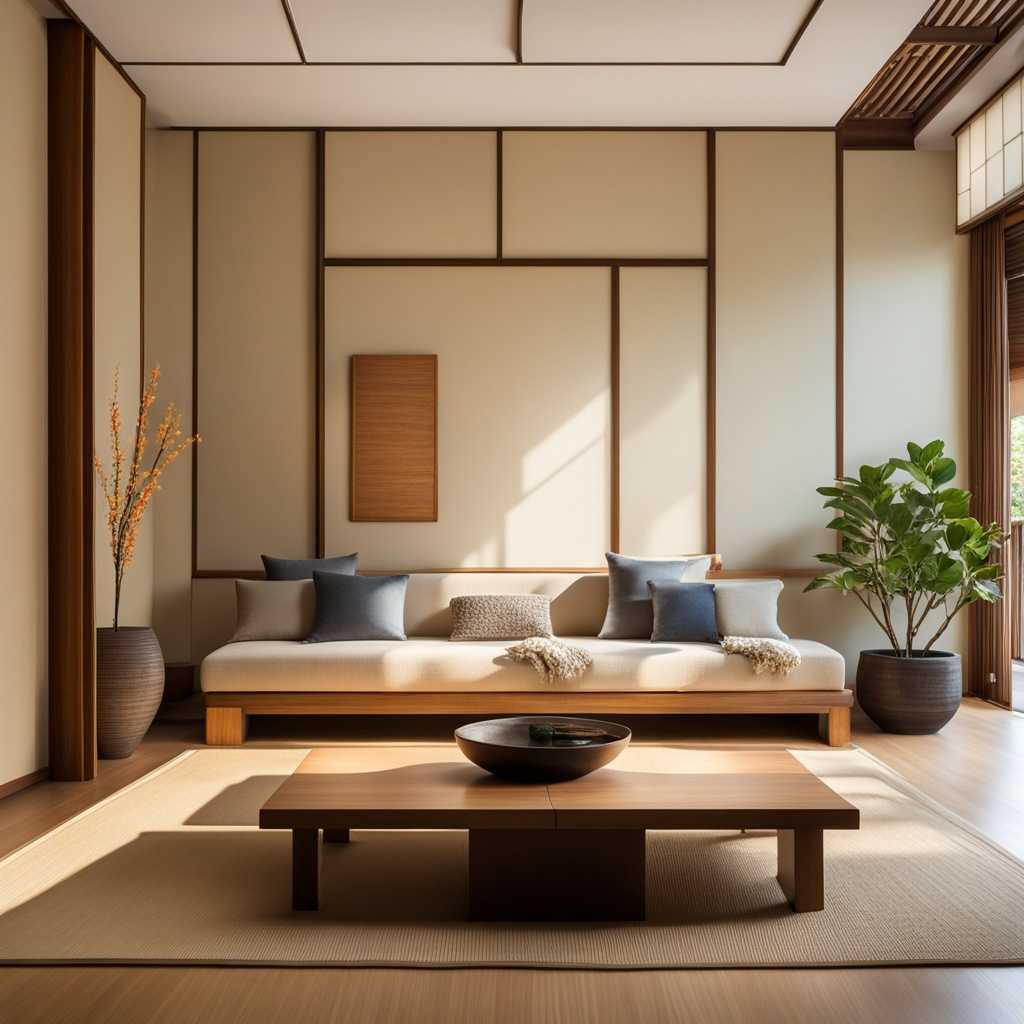
Tatami mats are key to making a Japanese living room feel real. They look great and make the room more comfy and useful. Made from rice straw and rush grass, they bring the feel of Japan into your home.
Comfort & Style of Tatami
Tatami mats feel soft under your feet, making them perfect for chilling out. They’re great for meditation or family time, bringing everyone closer. Their natural look adds warmth, making your home welcoming.
These mats fit well with simple decor, keeping things real while adding comfort. They make any room feel more at ease.
Functionality and Benefits
Tatami mats are not just pretty; they’re also very useful. They keep the air moist and the temperature just right, all year long. This is great for changing seasons.
They’re also very strong, lasting through daily use. Adding tatami mats brings a piece of Japanese culture into your home. It also makes your living space more practical and beautiful.
Utilize Shoji Screens for Versatility
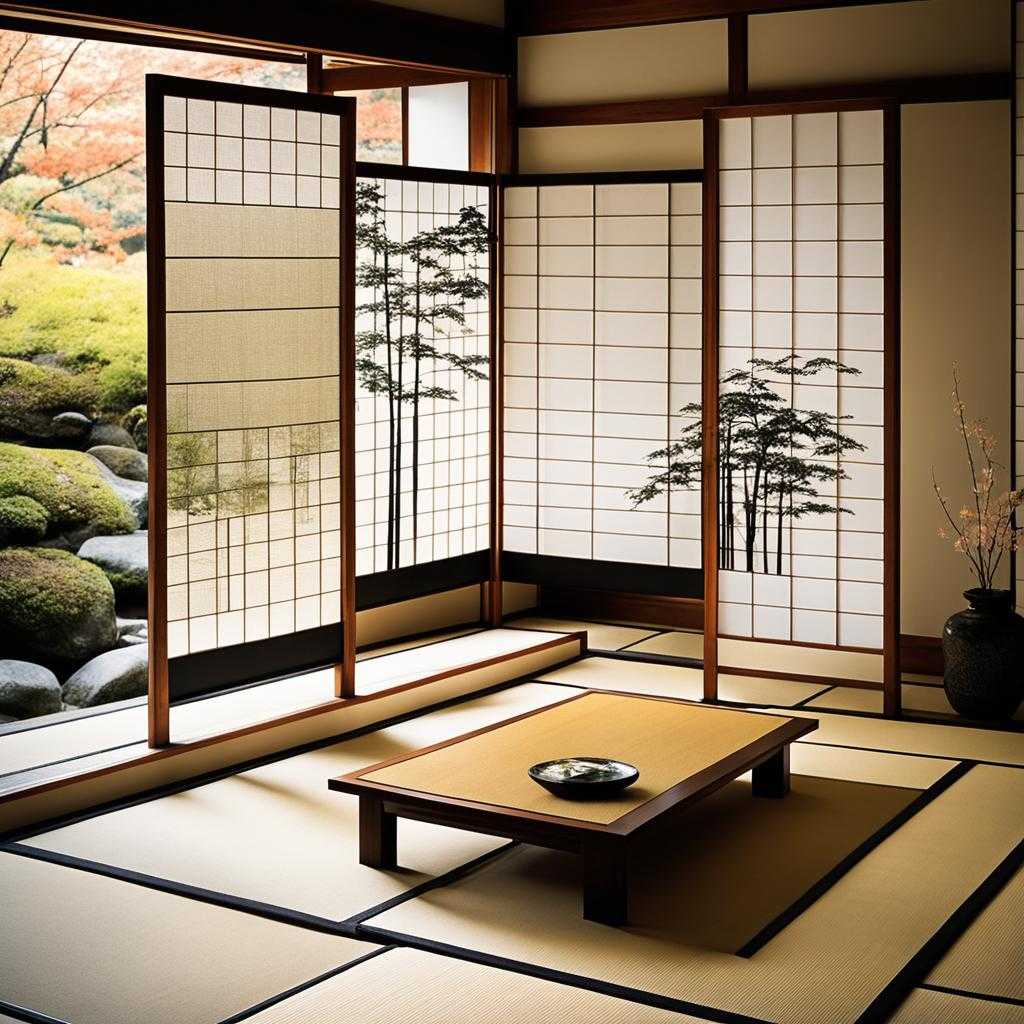
Shoji screens are key in Japanese design. They offer many benefits that make a space look better and work better. Adding shoji screens to your home creates a peaceful place that balances light and privacy.
Enhancing Natural Light
Shoji screens let natural light in while keeping some privacy. They have wooden frames and translucent paper. This makes any room feel welcoming.
These screens let you control how much light comes in. This creates a light and airy feel. They’re perfect for those who want to use natural light in their homes.
Room Dividing Options
Shoji screens are great for dividing rooms without using solid walls. They work well in open-concept homes. You can move them easily to change your space as needed.
This makes them very useful and keeps your space looking beautiful. They keep the calm look of traditional Japanese homes.
| Feature | Shoji Screens | Traditional Walls |
|---|---|---|
| Light Penetration | High | Low |
| Privacy Control | Moderate | High |
| Flexibility | High | Low |
| Weight | Light | Heavy |
Highlight the Importance of Natural Light
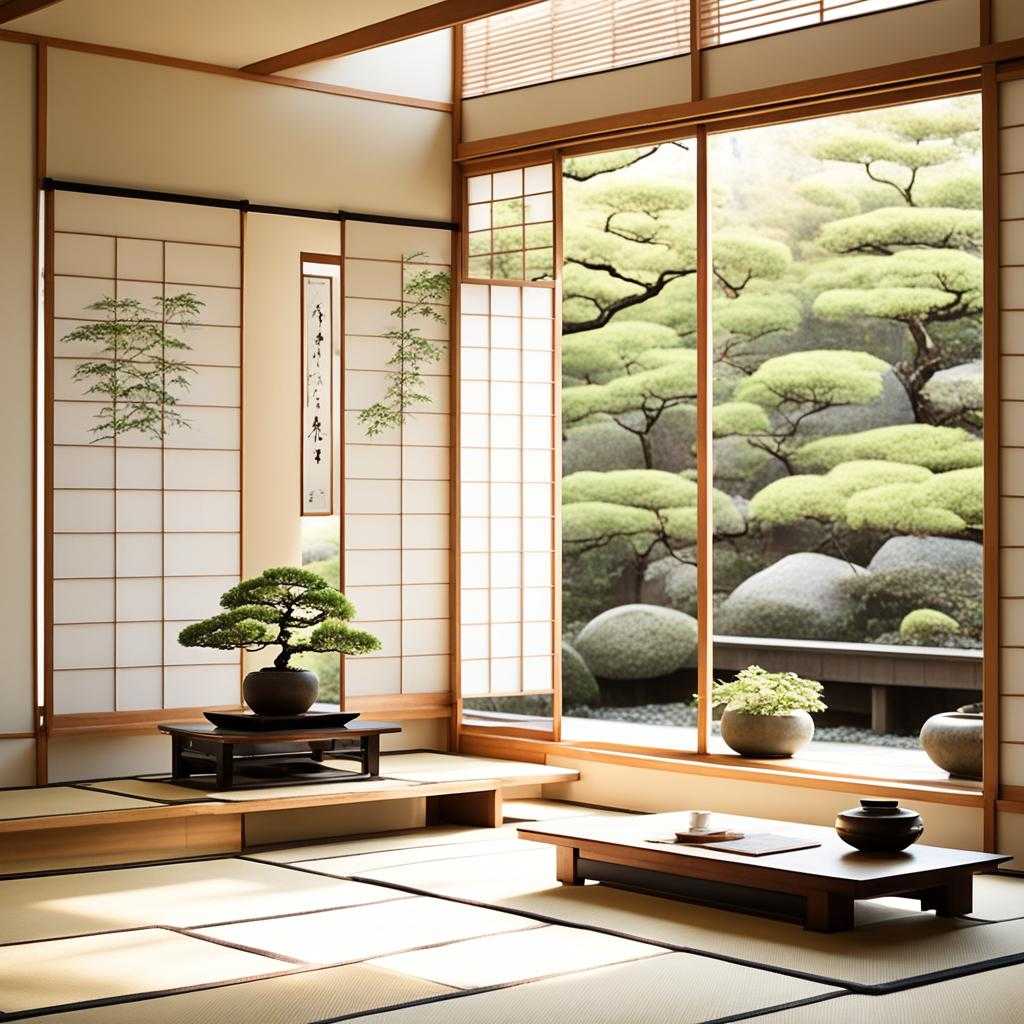
Natural light is key to making a Japanese living room feel calm and inviting. It makes spaces bright and peaceful. Let’s explore how to bring more natural light into your home.
Using Large Windows and Skylights
Adding large windows and skylights changes a room for the better. They let in lots of sunlight, connecting indoor areas with the outdoors. The big glass makes the room look bigger and more open.
Light, Sheer Curtains
For a softer touch, light, sheer curtains are perfect. They let in sunlight but keep the room private. This fits well with Japanese design, adding beauty and comfort.
Create a Zen Garden Corner
Creating a zen garden corner in your living room brings tranquility. It’s a small, peaceful spot that invites you to think deeply. With fine sand, smooth stones, and tiny plants, it looks beautiful and peaceful.
Raking the sand into patterns can be a calming activity. It helps reduce stress and brings peace. This simple act makes your living area more beautiful and connects you with nature.
Being near this peaceful corner helps you forget the busy world outside. It’s a chance to relax and think deeply. This space turns your home into a calm retreat.
Adding small water features or sculptures can make the space even more special. It turns your living area into a personal haven. By using these natural elements, you can create a design inspired by Japanese beauty.
Low Seating for Japanese Living Room Design
Low seating is key in making Japanese living rooms welcoming. It brings people closer together, making them feel more at ease. Using low tables, floor cushions, and futon sofas helps everyone relax and connect better.
Promoting Intimacy and Comfort
Low seating helps build strong bonds among family and friends. It makes conversations flow naturally, deepening relationships. This setup reflects traditional Japanese values, valuing shared moments.
It also meets today’s need for comfort, making every meeting unforgettable.
| Seating Type | Benefits | Ideal Usage |
|---|---|---|
| Floor Cushions | Increased comfort; promotes relaxation | Casual gatherings |
| Futon Sofas | Space-saving; versatile for sleeping | Daytime lounging and nighttime use |
| Low Tables | Encourages interaction; enhances functionality | Meals, games, and activities |
Low seating not only shows off Japanese culture’s beauty but also creates a peaceful, comfy living space. It mixes tradition with modern life perfectly.
Add Indoor Plants for Serenity
Adding indoor plants to your Japanese living room brings life and calm. Choose easy-to-care-for plants like bonsai trees, ferns, and bamboo. These plants add green touches that make your room peaceful.
They remind you of nature and fit well with Japanese design. This design values living in harmony with the environment.
Bonsai Trees and Other Variants
Bonsai trees are perfect for those who value patience and beauty. They become a key part of your living area. Their beauty and the care they need encourage mindfulness.
Adding plants like ferns or snake plants brings different textures and greens. This adds to the peaceful feel of your home.
Benefits of Indoor Plants
Indoor plants are more than just pretty. They help clean the air and make living spaces healthier. Studies show that being around plants can boost your mood and lower stress.
By adding plants to your Japanese living room, you make a space that’s good for your mind and heart. It becomes a peaceful place for both your body and soul.



